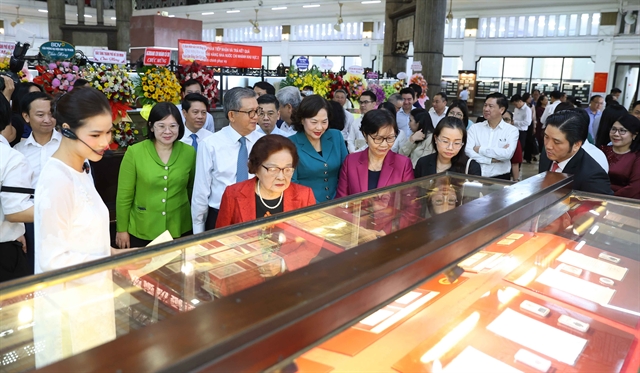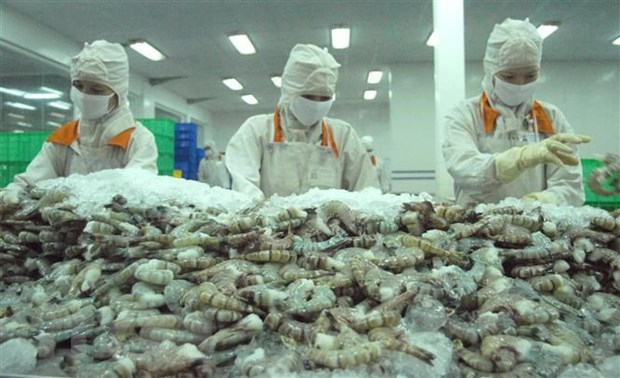 Op-Ed
Op-Ed

I can’t bear the fact either.
" />A young girl recently shared a sadden story about the death of her father on Facebook. The 48-year-old man died of drinking methanol-tainted alcohol, the tragedy that the Hanoian said she never thought of even though she said she was aware of such type of accidents now and then from the media.
I can’t bear the fact either.
Nguyễn Khánh Chi
A young woman recently shared a very sad story about the death of her father on Facebook.
The 48-year-old man died after drinking methanol-tainted alcohol.
The grief-stricken daughter said she’d read and heard about methanol related deaths, but never thought it would ever happen to her father.
I can’t imagine the pain of losing a father too early. It seems unbearable, so my heart grew heavier as I looked a bit deeper into the issue.
At least 25 cases of poisoning caused by home-brewed spirits occurred in Hà Nội alone within three weeks, from February 22 to March 14. Three died.
Earlier in February, the mountainous Lai Châu Province saw the biggest case alcohol poisoning. Seven died and 33 were hospitalised. The culprit in this case was methanol, too.
A Belgian man is currently being treated at a local hospital in Hà Nội after suffering temporary blindness following consumption of a drink containing methanol.
How can such a harmful substance be so easily available?
Methanol is the simplest form of alcohol. It’s closely related to ethanol, the type of alcohol normally found in beer, wine and spirits – but much more lethal.
Methanol is converted in the body into formaldehyde and formic acid, which are extremely toxic, says Doctor Nguyễn Trung Nguyên of the Bạch Mai Hospital’s Poison Control Centre.
“If consumed in excess, it can lead to blurred vision, headaches, nausea and respiratory problems. Later, symptoms often worsen to include organ failure, brain damage or death,” he said.
A recent news report reminded readers that methanol leads to more deaths per capita than cigarettes, methamphetamine, opiates and even heroin.
If this is bad, relevant figures are worse. About 90 per cent of Vietnamese men drink beer and other forms of liquor, and 96 per cent of these consume home-distilled wine, 50 per cent of which contains methanol.
A 2015 survey by the Vietnam Beverage Association revealed that local drinkers consumed 3.4 billion litres of beer and 342 million litres of other spirits, a 40 per cent increase over 2010. This places Việt Nam in the top 10 list of alcohol consumers in the world.
According to the Ministry of Health (MoH), as many as 1,000 cases of food poisoning were recorded from 2011 to 2016, affecting 30,000 people, killing 164. On average, 170 food poisoning cases involving 5,000 people take place every year, killing 30.
The problem is serious enough that the making of and trading in fake alcohol, methanol-tainted alcohol in particular, should be stopped by all means.
Slaps on the wrist
However, these offences only attract administrative penalties ranging from VNĐ2 million to VNĐ120 million (US$87 - $5,200). In accordance with Decree 185 issued in November, 2013, the culprits can also have their licences (if any) revoked, business suspended with all related equipment and facilities confiscated.
Profits earned from making and selling fake liquor are 10 to 12 times higher because the spurious products are sold at the same price as the real one.
In any illegal trade, high profits always blur or blind the eyes of the wrongdoers, so if laws are not strong enough and implementation is weak, the ground for malpractice becomes fertile.
On March 15, the Hà Nội People’s Court sentenced Trần Thị Hoa and her husband to 30 and 24 months in prison respectively for making fake imported wine liquor. That Hoa had previously served a 19-month sentence for the same offence shows how attractive the profits are.
Public warning
The Ministry of Health has responded to the situation by warning people to stay away from industrial alcohol as well as liquor that contains more than 0.1 per cent of methanol, saying this could cause blindness and death.
A draft law on preventing the harmful effects of beer, liquor and cigarettes is expected to be issued later this year. This law has a separate chapter regulating measures to reduce demands for alcoholic beverages, for example, requiring warnings printed on bottles, or a ban on selling beer and other liquor in public places like hospitals, schools or playgrounds.
I don’t think these measures will work well, because it is difficult to implement them.
You can’t see, smell or taste it. So how would you know if a home-distilled spirit contains methanol? How would you know the home-brewed drink is drinkable? Can any test be conducted before drinking it?
Drinking alcohol has become such an intrinsic part of Vietnamese culture that it is not feasible to think of eliminating it. But there is an urgent need to make it a safe habit.
For this we need strict regulations, like making it mandatory for register the making and trading of home-brewed alcohol. Such people or households must be provided with permits and there should be authorised agencies that test the products before they are sold or otherwise consumed.
Just last Wednesday, the ministry recommended that a separate chapter on managing home-brewed alcohol is included in the draft Decree on Wine Trading. This is needed to manage the quality of liquor and to register the product with local authorities whose responsbility must also be heightened, the ministry said.
Responding to the spike in alcohol poisoning, Hà Nội has had hundreds of inspection teams join forces from various sectors to crackdown on fake wine. The inspections, which began this month, will last until mid-April. Thus, 2,200 litres of liquor of unclear origin have been destroyed and fines of over VNĐ700 million collected so far.
So far, so good, but we need more inspections and stiffer fines to deter future crimes in this field. Unless people understand better the dangers of methanol and see that authorities have adopted a zero-tolerance policy for production and consumption of fake liquor, the problem is likely to persist.
At this stage, a complete ban on homemade liquor does not seem warranted, but that would be preferable to having another father, brother or son die an untimely death. — VNS


.jpg)

